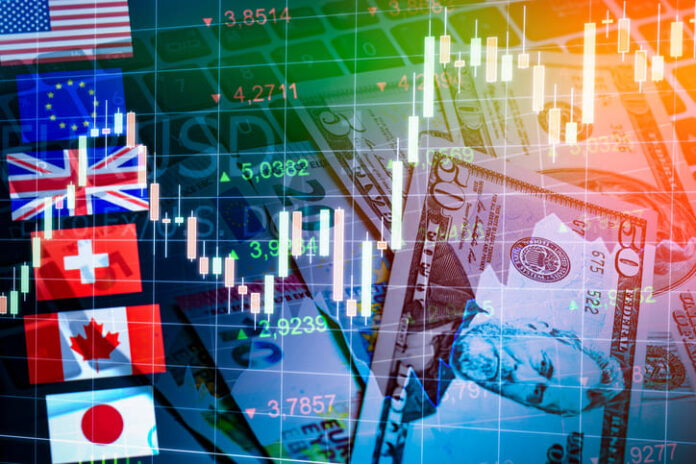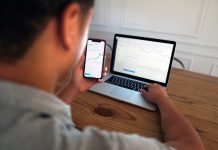Forex trading, or foreign exchange trading, involves buying and selling different world currencies to make a profit from fluctuating exchange rates. As the largest and most liquid market globally, with an average daily volume of over $6 trillion, the forex market offers traders the opportunity to participate in currency exchanges across different time zones. Unlike the stock market, forex is decentralized, meaning trading occurs globally, around the clock, five days a week.
How Forex Trading Works
Forex trading takes place through currency pairs, where one currency is traded against another. Each currency pair is expressed in terms of the “base currency” and the “quote currency.” For example, in the EUR/USD pair, the euro (EUR) is the base currency, and the U.S. dollar (USD) is the quote currency. The quoted price shows how much of the quote currency (USD) is needed to buy one unit of the base currency (EUR). Traders aim to make a profit by predicting whether the base currency will appreciate or depreciate against the quote currency.
Example: EUR/USD Trade
If a trader believes the euro will strengthen against the U.S. dollar, they might buy the EUR/USD pair, effectively buying euros with dollars. If the euro does indeed rise in value relative to the dollar, they can sell the pair at a higher price to make a profit. Conversely, if the euro weakens, they would incur a loss.
The Key Components of Forex Trading
Successful forex trading requires an understanding of several fundamental elements:
- Currency Pairs: Currency pairs are the core of forex trading, and each pair has a unique behavior based on global economic conditions.
- Leverage: Forex trading often involves leverage, allowing traders to control larger amounts with smaller investments. This amplifies potential profits but also increases risk, meaning small movements in price can have a significant impact on gains or losses.
- Pips and Lot Sizes: A “pip” is the smallest unit of price change in a currency pair, often equal to 0.0001 for most pairs. Currency trading also involves choosing the appropriate “lot size,” which can range from a standard lot (100,000 units) to a micro lot (1,000 units).
- Bid-Ask Spread: The difference between the buying (bid) and selling (ask) price is known as the spread. This spread represents the cost of trading and is typically tighter (smaller) for major pairs like EUR/USD or GBP/USD due to high liquidity.
The Role of Economic Indicators in Forex
Currency values are highly sensitive to economic data, including:
- Interest Rates: Central banks control interest rates, which directly impact currency values. Higher interest rates tend to attract foreign capital, increasing currency value.
- Inflation Rates: Higher inflation generally devalues a currency, while lower inflation rates strengthen it.
- Economic Growth Data: Indicators like GDP, employment rates, and industrial production can influence currency markets, as they reflect a country’s economic health.
- Political Stability and Global Events: Political crises, elections, and international conflicts can create volatility in the forex market, as traders react to uncertainties.
Risks and Rewards in Forex Trading
Forex trading offers lucrative possibilities but is not without risks. The volatility of currency markets, combined with leverage, can lead to substantial gains or losses. Traders must carefully assess their risk tolerance and implement effective risk management strategies to safeguard their investments. Key risk management techniques include using stop-loss orders to limit losses, setting take-profit levels to secure gains, and avoiding over-leveraging.
Getting Started with Forex Trading
For beginners, a great way to start is with a demo account, which allows traders to practice and develop strategies in a simulated market environment without risking actual funds. As traders gain confidence, they can transition to live trading with a small investment to manage potential losses effectively. Choosing a reliable and user-friendly trading platform is also essential for an optimal trading experience.
Example of a Trading Platform: FXRoad
FXRoad is a trading platform that offers a range of tools designed to support both beginners and experienced traders. With features like real-time data, analysis tools, and educational resources, FXRoad helps users gain insights into the forex market. The platform also provides demo accounts, allowing beginners to familiarize themselves with forex trading before investing real money.
Types of Forex Analysis
Forex traders use three main types of analysis to make informed decisions:
- Technical Analysis: This method uses historical price data, charts, and indicators to predict future price movements. Technical analysts rely on tools like moving averages, RSI (Relative Strength Index), and Fibonacci retracements to identify trends and potential entry or exit points.
- Fundamental Analysis: This approach focuses on economic indicators, central bank policies, and political events to evaluate a currency’s intrinsic value. Fundamental traders analyze data releases and global economic developments to anticipate how they may impact currency pairs.
- Sentiment Analysis: Sentiment analysis gauges the market’s mood or bias toward a particular currency. Traders may use sentiment indicators, such as the COT (Commitments of Traders) report, to understand if the market is trending bullish or bearish on a specific currency.
Conclusion
Forex trading opens a gateway to the global financial market, allowing traders to profit from currency fluctuations. While it presents immense opportunities, success requires a solid understanding of the market, sound strategies, and discipline. New traders can benefit from demo accounts, educational resources, and reliable platforms like FXRoad to build their skills and approach the market with confidence. With the right preparation and a careful risk management plan, forex trading can be a rewarding venture for those willing to navigate its complexities.
Sources:
- https://www.fxroad.com/en/why-fxroad
- https://hellagood.marketing/promo-codes/
- https://fxreviewtrading.com/broker/fx-road-review/
Disclaimer: This article contains sponsored marketing content. It is intended for promotional purposes and should not be considered as an endorsement or recommendation by our website. Readers are encouraged to conduct their own research and exercise their own judgment before making any decisions based on the information provided in this article.









